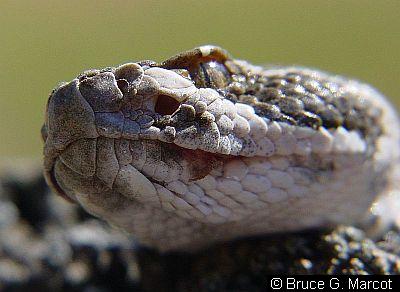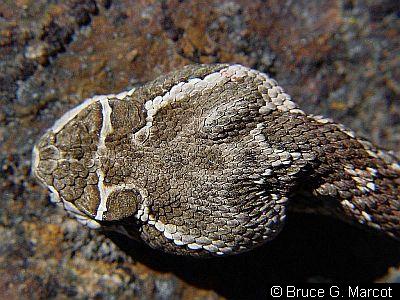Click on the images for larger versions
  |
|
Pit Viper Adaptations |
|
|
Click on the images for larger versions
  |
|
Pit Viper Adaptations |
|
Northern Pacific (Western) Rattlesnake, Crotalus viridis oreganus |
Credit & Copyright: Dr. Bruce G.
Marcot
| Explanation: How
many adaptations to a predatory life
style can you spot in these photos?
You are getting dangerously close to
a juvenile western
rattlesnake, Rattlesnakes
are stealth or ambush
predators. They use the adaptation of cryptic
coloration of their dorsum. This includes the camouflage-like
mottling that blends well into vegetation and soil. It also includes the
bold white lines on the head and back which may serve as disruptive
coloration to visually break up the shape of the animal so prey won't
recognize it as a snake and predator. Note the heavily keeled dorsal scales. Scales serve to reduce water loss, and the keels on the scales likely add structural strength and may scatter light and add to the animal's overall camouflage. A characteristic of Viperids is that the head has small scales, but whether this is an adaptation per se is unknown. Another adaptation is the vertical pupil of the eye, found in Viperids, lyre snakes, cat-snakes, and others. Snakes with vertical pupils tend to be nocturnal or crepuscular, and when in daylight a vertical pupil can close more fully than can a round pupil. And of course, one major adaptation for quick locomotion through tight places and predatory efficiency is leglessness! |
Next week's picture: A Gondwana Island Forest
Member Theme of Taos-Telecommunity